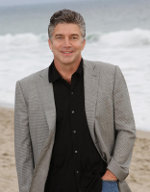 New biological developments in the spinal field could revolutionize treatment in the future. Ian Armstrong, MD, Medical Director of Southern California Spine Institute in Los Angeles, discusses the current state of biologics in spine surgery and where the field is headed.
New biological developments in the spinal field could revolutionize treatment in the future. Ian Armstrong, MD, Medical Director of Southern California Spine Institute in Los Angeles, discusses the current state of biologics in spine surgery and where the field is headed.
Stem cells: the next frontier?
The next frontier in spine surgery could be stem cells and regenerative biologics. Surgeons are now evaluating new regenerative products in spine surgery on an experimental basis. A few examples being tested now to enhance fusion include:
• Adult stem cell products
• Autologous stem cells—i.e., harvesting the patient's own fat and "concentrating" the stem cells and growth factors
• Amniotic "stem cells" — pluripotential cells and growth factors from donated amniotic fluid
Adult stem cell use in spinal surgery is exemplified by a product from NuVasive — Osteocel-Plus. Here adult stem cells and growth factors are harvested from cadaveric iliac crest, concentrated, preserved, frozen and delivered to the OR for spinal fusion. This adult stem cell product has developed wide spread use over the last several years.
Autologous stem cell technology has also seen great advancement over the last several years. This is best exemplified by perhaps Cytori Technology in San Diego. Adipose tissue is harvested from a patient and then the "stem cells" pluripotential cells and growth factors are concentrated and delivered in a directed manner back to the patient in the surgical suite.
Aurora Spine, based in Carlsbad, Calif., has helped advance the use of amniotic fluid with its pluripotential cells, growth factors for spinal surgery through its product Amniopur.
"Amniopur from Aurora Spine is harvested growth factors, and 'stem cells' from amniotic fluid. It has shown promise in spinal surgery and is currently being evaluated in the clinical arena," says Dr. Armstrong. "The medical community and patients are very excited about the potential medical and surgical applications."
Research: beyond fusion
Additional ongoing research examines whether surgeons can inject growth factors into the disc space safely to slow the degenerative process or regenerate damaged discs. The disc is a very hostile environment, making any solutions there challenging.
"There is no direct blood supply to the disc; it's anaerobic; it's acidic," says Dr. Armstrong. "It's a challenge to put a biologic into the disc and have it survive and regenerate. But this is something we're interested in. We may have to inject early on in the process before the endplates are hypertrophic; if they become hypertrophic, it may be too far down the track."
A second key research area in biologics is regenerative solutions for facet joint issues. Spine degeneration and osteoarthritis are huge causes of disability among older adults, and finding growth factors that could impact patient care and quality of life would be significant.
Finally, the "Holy Grail" of biologics in the spine arena would be developing regenerative growth factors to heal the spinal cord and nerve itself. "I think that would be one of the areas regenerative cells and stem cells could be very helpful and exciting," says Dr. Armstrong. "Finding out how we can use these agents in some way to mitigate the damage during the acute trauma period would be revolutionary in spine care."
Challenges: sticking to science
Despite the clear potential for biologics and regenerative solutions in spine surgery, there are several clinical and administrative challenges for researchers and developers.
"It will take large studies with great numbers of researchers over time to see if these products are beneficial," says Dr. Armstrong. "I think it's important we stick to the science and outcomes studies. However, to track how much a product improves patient pain and discomfort is challenging to objectify."
Another challenge is public perception and excitement. People are very excited about the thought of using stem cells, but spine surgeons must proceed with caution.
"There is almost a patient-driven interest in stem cells and regenerative medicine," says Dr. Armstrong. "As surgeons, we must use scientific basis to decide what we are going to use, outcomes-based studies to determine the best products and then proceed scientifically in this new arena."
Future: best opportunities
As the over 55-year-old population expands, there is a huge opportunity for biologics to impact spine care and decrease osteoarthritic facet problems. However, cost of care will continue to be a big factor in treatments going forward.
"As we look at costs to spine problems in our society, including loss of work, some have estimated costs total $100 billion," says Dr. Armstrong. "If you can solve a problem that impacts a lot of people with reasonable economics, you have a great business model."
More Articles on Spine Surgery:
Roadblocks to Spine Reimbursement: Overcome Today's Challenges & Prepare for Tomorrow
Freehand Pedicle Screw Placement in Subaxial Cervical Spine: Accuracy & Safety Analysis
Is Outpatient Spine Surgery a Positive Trend? 5 Spine Surgeons Weigh In